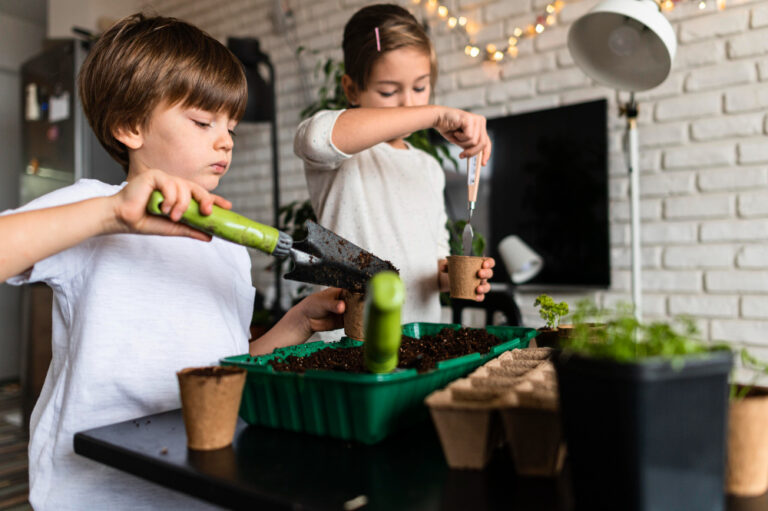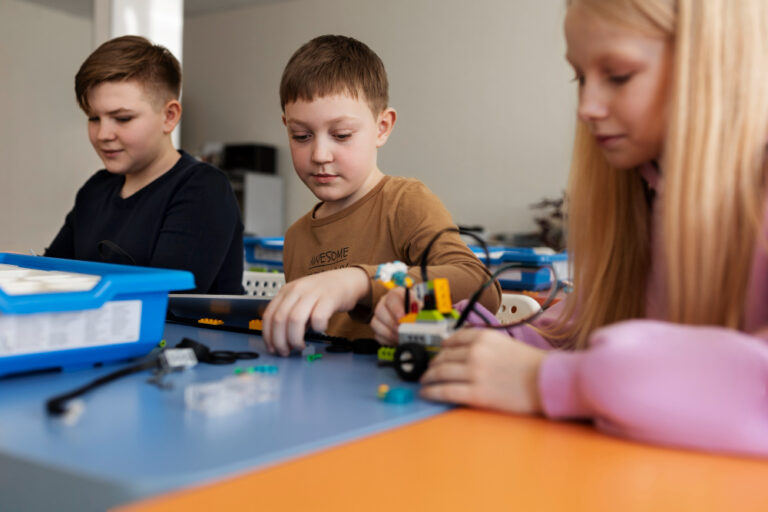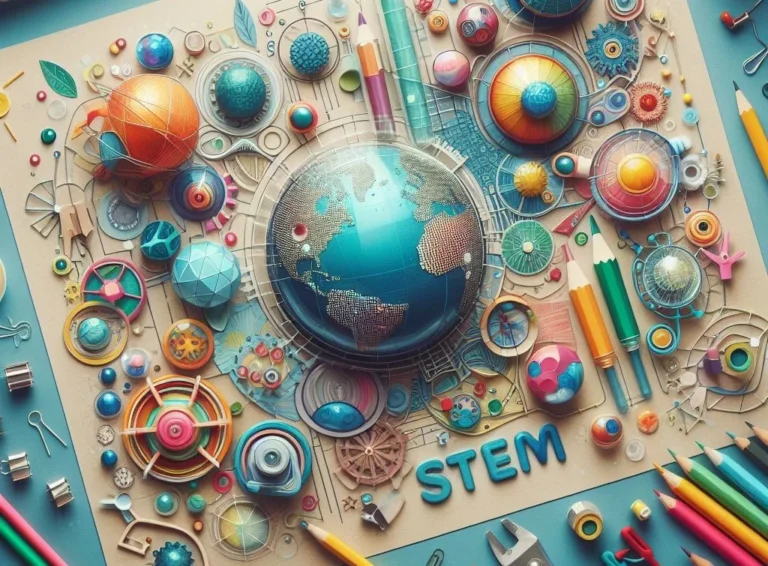STEM activities are a fun and engaging way to introduce children of all ages to science, technology, engineering, and math concepts. These hands-on learning experiences can spark interest in these fields and cultivate critical thinking skills. Whether you’re a parent, teacher, or caregiver looking for new ways to incorporate STEM into your child’s life or a curious individual seeking self-enrichment, below are some STEM activities for all ages! Where curiosity meets innovation, and learning knows no bounds.
Studies show that hands-on STEM experiences boost critical thinking by 25%, problem-solving by 30%, and creativity by 42%! This isn’t just about raising future scientists and engineers. It’s about equipping your child with the essential skills to succeed in our ever-changing world. Join us on an adventure where slime volcanoes erupt; robot races ignite excitement and the joy of learning without age limits!
STEM Activities for Preschoolers (ages 3-5)
Preschool is a magical time filled with boundless curiosity and a thirst for exploration. This is where the seeds of STEM are sown, not through textbooks but through engaging hands-on play.
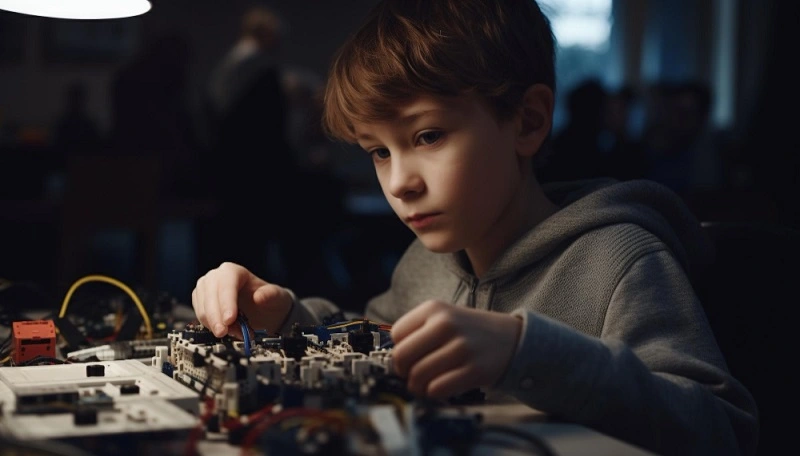
Sensory Play & Science
Sensory play isn’t just about touching and feeling; it involves using all five senses to understand and interact with the environment, making it a perfect STEM activity for preschoolers.
- Color Chameleons: Fill clear containers with water and food coloring. Let your little explorers mix and match colors, predicting and observing the results. Discuss primary and secondary colors, creating a mini rainbow in their own hands.
- Texture Treasure Hunt: Hide objects with different textures (soft, rough, smooth, bumpy) in a sensory bin filled with rice, beans, or sand. Encourage them to search using their hands and describe what they find. Can they guess the object based on its texture alone?
- Slime Spectacular: Create colorful, stretchy slime with simple ingredients like glue, water, and food coloring. Let them experiment with different textures by adding glitter, sequins, or chia seeds. This messy masterpiece is a sensory delight and a fun way to explore viscosity.
Building & Creating
It involves children building and creating, encouraging creativity, problem-solving, and fine motor skills.
Blocktastic Creations
Provide an array of colorful blocks and encourage your little architect to build towers, bridges, or even imaginary castles. Discuss shapes, sizes, and balance. Encourage spatial reasoning and problem-solving skills.
Playdough Pals
Playdough isn’t just for fun; it’s a fantastic tool for developing fine motor skills and creativity. Let them mold animals, shapes, or letters, encouraging storytelling and imaginative play.
Recycled Robots
Transform cardboard boxes, plastic bottles, and other recyclables into wacky robots or fantastical creatures. This open-ended activity sparks creativity, resourcefulness, and an understanding of different materials.
Nature Collector Hunt
Head outdoors and tackle a sensory adventure! Collect leaves of different colors, textures, smooth stones, and exciting twigs. Back at home, create nature collages or use the finds for pretend play, connecting with the natural world.
Fun Experiments & Everyday Items
It involves using everyday items to create exciting and interactive experiments that stimulate curiosity and the scientific method.
- Rainbow in a Jar: Create a mesmerizing rainbow using water, oil, and food coloring. Let them observe how the colors separate, discuss density, and marvel at the colorful layers.
- Erupting Volcano: Build a mini volcano using baking soda, vinegar, and dish soap. Watch it erupt with a fizzy surprise, learning about chemical reactions in a way they won’t forget.
- Invisible Messages: Write secret messages with lemon juice and reveal them with a magic “brush” dipped in baking soda. This simple activity sparks curiosity about science and adds a touch of mystery to playtime.
- Floating Boats: Build boats using aluminum foil, cardboard, or leaves. Test their buoyancy in water, discussing how other materials behave and making predictions about which ones will float.
STEM Activities for Elementary Students (ages 6-10)
Learning doesn’t have to be confined to textbooks and worksheets. For curious minds of all ages, especially elementary schoolers (ages 6-10), hands-on projects reign supreme in igniting a love for STEM. So, put away the dusty textbooks and prepare to dive into a world of exploration, experimentation, and discovery!

Science Squad
It includes science experiments that combine education and entertainment to create memorable learning experiences.
Pepper & Soap Experiment
Discover how soap molecules repel water by sprinkling pepper onto a bowl of water and then dipping it in a soapy finger, watching the pepper scatter away from the finger.
Plant Detectives
Grow different plants in varying conditions and observe how sunlight and water affect their growth. Track data, conclude, and become mini-botanists!
Animal Architects
Observe animal homes (bird nests, ant hills) and recreate them using safe materials. Discuss adaptations and the science behind these unique structures.
Weather Experts
Build a simple weather station using a bottle and materials like leaves and yarn. Track temperature, wind direction, and precipitation, becoming backyard meteorologists.
Magnetic Marvels
Experiment with magnets of different sizes and shapes. Explore attraction, repulsion, and how magnets interact with other objects. Build a simple compass and navigate your way around!
Coding Champions
It includes activities that introduce coding and programming in a fun and interactive way.
- Robot Racers: Build simple robots using kits or recycled materials. Program them to follow lines, avoid obstacles, or even race against each other. Explore the world of robotics and coding in action!
- Block-Based Builders: Create fun animations or interactive stories using block-based programming platforms like Scratch. Playfully learn coding concepts and unleash their digital storytelling abilities.
- App Inventors: Design and develop simple mobile apps using age-appropriate tools. Explore app development basics and witness their ideas come to life!
Engineering Shows (Advanced)
It includes activities that challenge critical thinking, problem-solving, and teamwork skills.
Egg Drop Challenge
Design and build a protective device for an egg to survive a drop from a height. Test different materials, experiment with design principles, and celebrate the science behind the “uncracked” winner.
Spaghetti Towers
Build the tallest and strongest tower possible using only spaghetti and marshmallows. This activity tests teamwork, problem-solving, and understanding of structural integrity.
Miniature Vehicles
Use recycled materials to design and build land, water, or air vehicles. Test their functionality, discuss forces like thrust and drag, and unleash their inner engineers.
Science Experiments (Quantitative)
It includes experiments that involve collecting data, measuring, and analyzing results.
- Chemical Reactions: Measure the baking soda needed to create the most significant volcano eruption. Discuss the relationship between ingredients and the reaction’s intensity.
- Rainbow Chromatography: Separate the colors in ink or food coloring using water and filter paper. This hands-on experiment demonstrates the properties of solutions and chromatography.
- Seed Sprouting Speed: Plant seeds in different conditions (light, water) and measure their growth rate over time. Conclude and develop hypotheses about the factors affecting plant growth.
- Water Absorption: Test the water absorption capacity of different materials (soil, paper, fabric). Discuss the science behind absorption and its applications in everyday life.
STEM Activities for Middle Schoolers (ages 11-13)
Middle school is the perfect time to ignite your 11-13-year-old’s passion for STEM with exciting, hands-on activities that challenge their minds and spark their creativity. Forget the usual science fair routine – these activities are packed with real-world challenges, advanced robotics, and exciting experiments.

Tech-Savvy Creations
It includes activities that incorporate technology and design thinking.
Coding Crafts
Combine coding and creativity with projects like LED light-up bracelets, programmable greeting cards, or interactive dance mats. Use platforms like Arduino or Raspberry Pi to explore microcontrollers and bring their creations to life.
App Development Challenge
Design and develop their mobile app to address a community issue, like promoting local businesses or encouraging sustainable practices. This fosters user-centric design thinking and problem-solving through technology.
Game Design Gurus
Build video games using beginner-friendly game engines like Unity or Scratch. They can design the story, characters, and mechanics, learning valuable coding skills and unleashing their storytelling power.
Science Detective Revealing Real-World Issues
It includes activities that analyze real-world problems and propose solutions through STEM knowledge.
- Mystery Meal Disorder: Investigate the science behind food additives and preservatives by analyzing popular snacks or drinks. Experiment with natural alternatives and compellingly present their findings.
- Air Quality Champions: Design and build air quality sensors using simple materials like Arduino and sensors. Monitor their local environment and propose solutions to combat air pollution.
- Renewable Energy Revolutionaries: Research renewable energy sources like solar, wind, or geothermal. Build small-scale models and compare their effectiveness, igniting their passion for sustainable solutions.
Engineering Wonders with a Purpose
It includes activities that challenge critical thinking, problem-solving, and teamwork while serving a specific purpose.
Smart Home Inventors
Designed and built automated devices for their homes using microcontrollers and sensors. Think automatic plant watering systems, intelligent light dimmers, or voice-controlled assistants.
Disaster Relief Designs
Research natural disasters and design structures or devices that can withstand them. Test their creations under simulated conditions and showcase their potential impact on disaster relief efforts.
Assistive Technology Innovators
Designed and built assistive devices for people with disabilities using simple materials and readily available technology. This fosters empathy, design thinking, and problem-solving for a social good.
Showcase The Brilliance Beyond the Classroom
Educators and parents must recognize and celebrate students’ diverse talents outside of the traditional academic setting.
- YouTube Science Stars: Create engaging science explainer videos or educational animations with platforms like YouTube or TikTok. This develops communication skills, content creation knowledge, and the ability to connect with a broader audience.
- STEM Competitions & Hackathons: Challenge themselves by participating in regional or national competitions related to robotics, coding, or science fairs. This pushes them to collaborate, innovate, and present their work to a judging panel.
- Community Mentorship: Share their knowledge and passion by mentoring younger students or conducting STEM workshops in their community. This instills leadership skills, confidence, and the power of inspiring others.
STEM Activities for High Schoolers (ages 14-18)
High school is a pivotal time for exploration and preparation for the future. For your tech-savvy, ambitious high schoolers (ages 14-18), these STEM activities offer deeper dives into complex topics, opportunities for independent research, and potential pathways to real-world impact.
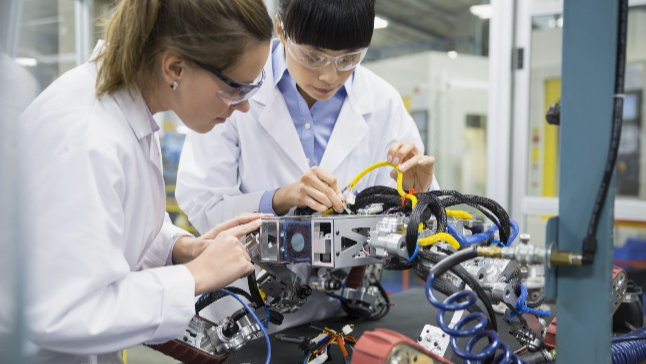
Deep Dives into Specific Fields
It involves activities guiding students in exploring fields like medicine, engineering, or computer science.
Biotechnology Breakthroughs
Explore the fascinating world of genetic engineering, synthetic biology, or bioprinting through research internships, online courses, or independent projects. This allows them to delve deeper into specific areas of interest and contribute to cutting-edge advancements.
Astrophysics Adventures
Analyze data from space telescopes, participate in citizen science projects like Galaxy Zoo, or even build their satellite payloads. This opens doors to the wonders of the universe and potential careers in space exploration.
AI & Machine Learning Masters
Explore the power of AI by building intelligent chatbots, developing image recognition programs, or participating in Kaggle competitions. This prepares them for a future where AI plays a significant role in various fields.
Tackling Global Challenges
It includes activities that challenge students to develop innovative solutions for global issues.
- Sustainable Solutions for Climate Change: Design and build climate-friendly technologies like solar power systems, water purification devices, or sustainable housing models. This empowers them to be part of the solution and contribute to a greener future.
- Global Health Champions: Research global health issues like infectious diseases, malnutrition, or access to clean water. Develop innovative solutions and advocate for change through campaigns or educational initiatives.
- Disaster Preparedness & Response: Design and build devices to aid disaster relief efforts, like drones for search and rescue or communication systems for disaster zones. This equips them with valuable skills and the desire to help others.
Innovation & Entrepreneurship
It includes activities encouraging students to think like entrepreneurs and develop business ideas.
3D Printing Pioneers
Design and print 3D models for prosthetics, educational tools, or architectural prototypes. This merges creativity with technology and opens doors to entrepreneurial endeavors.
App Development Entrepreneurs
Launch their mobile app idea – from concept to development to marketing. This teaches them valuable business skills, marketing strategies, and the power of innovation in a tangible way.
STEM Startups in the Making
Participate in hackathons, startup competitions, or incubators focused on STEM solutions. This gives them mentorship, resources, and the chance to turn their ideas into reality.
Real-World Applications
This involves activities that expose students to real-world problems and solutions.
- Research Internships or Fellowships: Gain invaluable experience working alongside researchers in universities, labs, or companies. This exposure to real-world research sets them on a path to future careers in STEM fields.
- Mentoring Younger Generations: Share their knowledge and passion by mentoring younger students, leading STEM workshops, or volunteering at science outreach programs. This encourages leadership skills and strengthens their love for STEM education.
- International STEM Competitions: Represent their country or school in international competitions like the International Mathematical Olympiad or the Intel Science and Engineering Fair. This provides global exposure, challenges them against top talent, and builds resilience and ambition.


